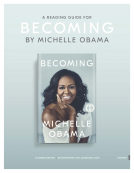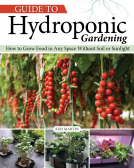
Autoimmune Protocol Reintroduction Cookbook
Nourishing Recipes for Every Stage of Your Reintroduction Protocol - Includes Recipes for The 4 Stages of AIP!
by Kate Jay
This title was previously available on NetGalley and is now archived.
Send NetGalley books directly to your Kindle or Kindle app
1
To read on a Kindle or Kindle app, please add kindle@netgalley.com as an approved email address to receive files in your Amazon account. Click here for step-by-step instructions.
2
Also find your Kindle email address within your Amazon account, and enter it here.
Pub Date May 25 2021 | Archive Date Apr 13 2021
Quarto Publishing Group – Fair Winds | Fair Winds Press
Talking about this book? Use #TheAutoimmuneProtocolReintroductionCookbook #NetGalley. More hashtag tips!
Description
You made it through the elimination period of the autoimmune protocol (AIP) diet, but now what? The Autoimmune Protocol Reintroduction Cookbook shows you how to successfully implement and track the reintroduction of inflammatory foods through all four stages with appropriate recipes and food lists.
The AIP diet is quickly gaining ground as the top health-supportive diet for autoimmune conditions. To follow this elimination diet, inflammatory foods are removed for 30–90 days. After the elimination period, the foods are then reintroduced in four stages to see if they can be tolerated. While eliminating foods can be daunting, the reintroduction phase of the diet is the most anxiety-provoking and failure-prone part of the process for AIP followers. Each stage of the reintroduction must be done methodically and carefully so that an autoimmune flare is not triggered.
AIP Certified Coach Kate Jay of the popular blog Healing Family Eats eases the challenge of reintroduction by guiding you step by step through every stage. One hundred tantalizing recipes, divided by stage, add pleasure to the process. Enjoy:
- Spice-Spatchcocked Chicken with Lime Gravy (Stage 1)
- Pear, Raspberry, and Cardamom Galette (Stage 1)
- Roasted Pomegranate Carrots on Whipped Tahini (Stage 2)
- Strawberry Vanilla Chia Seed Parfait (Stage 2)
- Lentil Ragu on Rutabaga Noodles (Stage 3)
- Blackberry Streusel Muffins (Stage 3)
- Vietnamese Pork with Noodles and Roasted Peanuts (Stage 4)
- Rice Pudding with Blood Orange and Saffron (Stage 4)
Along with the recipes and food lists, she offers best practices and troubleshooting advice, including how to handle an unsuccessful food reintroduction and when the next stage can be introduced.
Let The Autoimmune Protocol Reintroduction Cookbook be your reassuring companion as you take the next step in your AIP journey.
Available Editions
| EDITION | Other Format |
| ISBN | 9781592339730 |
| PRICE | $26.99 (USD) |
| PAGES | 208 |
Average rating from 10 members
Readers who liked this book also liked:
Silvia Moreno-Garcia
Historical Fiction, Literary Fiction, Sci Fi & Fantasy
Rachel Joyce
Historical Fiction, Literary Fiction, Women's Fiction
Publishers Lunch
General Fiction (Adult), Nonfiction (Adult), Teens & YA
Brian Soonho Yoon
Children's Nonfiction, Crafts & Hobbies
Rebecca Sharpe; Spencer Quinn; Rob Phillips; Matt Goldman; Jenny Elder Moke; Daisy Pearce
Mystery & Thrillers


















